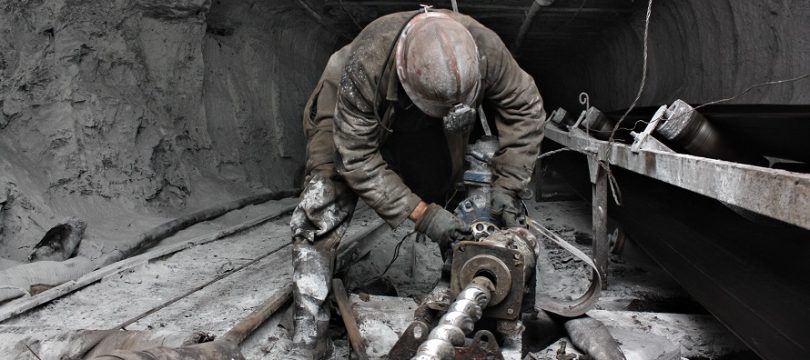
It has been well publicised that the resources boom we have seen in recent years is starting to peak and it is expected to start to taper off in coming years. Over the past 5 years across Australia we have seen a number of resources projects undertaken however most companies have put the brakes on new investments and once the existing project pool is completed there are very few new projects coming online. Deloitte Access Economics flagged this back in July 2012 where various media reports mentioned that most of the projects contributing to the current investment boom had been approved a number of years earlier, and there were few new projects getting across the line. This was re-enforced with signals from some of the large miners over the past 12 months that there was a shift in the industry from expansion to productivity.
This shift from growth to productivity has generated a bit of doom and gloom within South Australia and across the nation. The Olympic Dam decision made front pages of the Advertiser and was a large focus in second half of 2012 amongst business and political leaders within the state. Since this decision and others across Australia we have seen a shift in rhetoric in the media and by business leaders from growth to a focus on high Australian dollar, rising costs, and decreasing productivity. We have also seen this rhetoric from political leaders who have been forced to downgrade revenue forecasts and reassess budget priorities.
One of the key points to note is that commodity prices relative to long term trends are still strong (recent Gold Prices of $1600 to $1800 / Oz compare with $300 to $400/Oz 10 years ago). However over the time of great commodity price growth there has also been considerable increase in costs with many firms escalating labour above CPI, and increasing headcount with the same level of production output. This has meant that with the correction of commodity prices in the last 18 months there has been an erosion in margins requiring a shift towards productivity and efficiency.
In simple terms businesses need to respond and reduce their costs. No longer can we focus on increasing revenue or relying on a mega project to be approved but we need to become efficient.
So how can firms reduce costs:
- Focus – This may seem obvious however there has been an extended period of boom that many firms have simply raised expectations about the level of resources they need to operate. Firms need to reassess what is really important to their business and strip back on those costs which don’t contribute to the bottom line. Very few firms really understand the value and cost drivers in their business and lack an understanding of which expenditures contribute to value. Firms need to understand what their key metrics are and how these drive profitability. They need to understand where effort in their business improves their performance vs the effort which makes little differences.
- Accountability – Too many firms fail to empower their line managers and then hold them accountable for cost reduction. Instead they establish cost reduction committees or programs to identify potential initiatives of which many fail to make an impact or get offset by other cost increases. Asking line managers to give up resources generally gets resisted and asking nicely doesn’t cut it. Firms need to set cost reduction targets, build these into budgets, and set line management the task of reducing costs for their areas. These targets need to be applied across the board to encourage line management to work together to reduce costs and share in the pain. These targets can be backed up by a cost reduction program, but if there is not a hard target embedded into line managers budgets and performance bonuses then getting an impact will be a slow and frustrating grind.
- Do less. Most firms have too much going. This generates upward pressure on labour/contractor costs and distracts the organisation. Have the courage to drive simplicity and challenge to focus on core business. Reduce the amount of reporting, the number processes, the number of forms, and reduce the number of in house initiatives that are happening. Challenge people to use time effectively and encourage them to do less but focus on what matters. Line managers should be focused on core business and not getting distracted with sideline projects or getting bogged down with internal red tape. Free up time and empty the cup so that people can focus on the activities which drive improve in the bottom line. Just because a new internal initiative or process makes sense doesn’t mean it contributes to improvement in the core business metrics (and in fact can be a distraction).
- Understand risk. Firms need to recognise that risk management is not about eliminating risk. It is about reducing risk to an acceptable level. Understand the marginal cost and marginal benefit of reducing risk and be prepared to accept that things can go wrong because engineering all risks out of your business costs money.
- Value evolution. In a competitive market we need to constantly evolve. This means outsourcing, offshoring or eliminating non value activities and a competing through differentiation and innovation. This is an old chest nut but the key is focusing on things that make a difference. As markets evolve what was previously a value adding service is constantly shifting to a commodity service. Once it is a commodity you are competing on price, and lower cost operators overseas have the advantage. Administrative work can now be offshored to virtual assistants, education can now be undertaken online, manufacturing can be done cheaper overseas, and mining capital can be reinvested into the third world. Whilst this can be a threat it is actually an opportunity as shifting from commodity to value is a self-actualising mindset where we strive to be the best we can be and continually grow.



